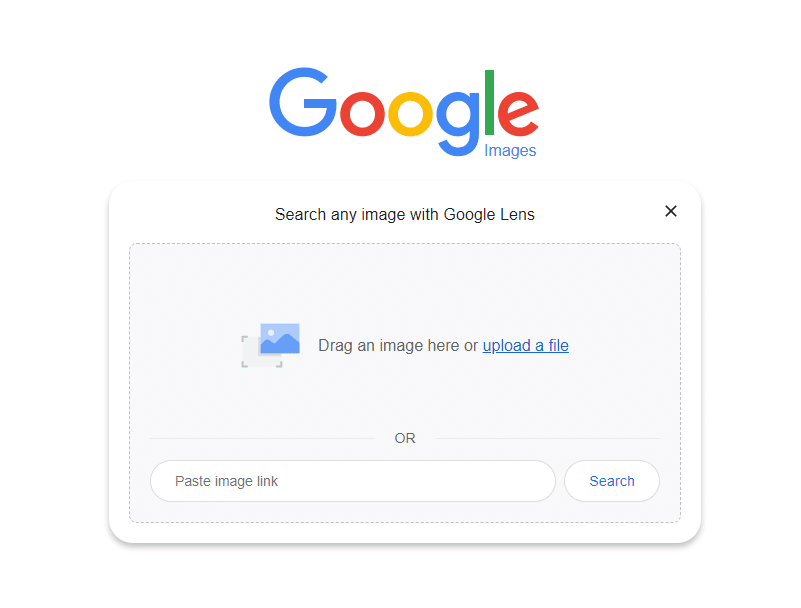Video content has become a powerful way to reach people through digital marketing. During 2023, people watched 17 hours of video content in an average week, and two-thirds of customers reported watching videos to learn more about brands. Not leveraging video can leave your brand behind.
Keeping an eye on how others use videos and tracking video content through reverse video search forms an important component of an effective video marketing strategy.
Let’s explore what you can do with a reverse video search and how to use this technique as part of your marketing plan.
- What is Reverse Video Search and How Does It Work?
- Why Do a Reverse Video Search?
- How to Conduct a Reverse Video Search? Best Tools and Platforms
- Applications of Reverse Video Search in Marketing
- Reverse Video Search Frequently Asked Questions (FAQ)
- Conclusion
What is Reverse Video Search and How Does It Work?
A reverse video search uses a single frame from a video to find that video elsewhere on the web. When you enter a particular shot from a video into a reverse video search tool, the algorithm analyzes components of the image, such as the pixels. It then looks for content that matches these criteria.
Reverse video search is a technique that enables tracking down the original source of a video using a single frame.
This method can help you track down the original source of a video, but it doesn’t work 100 percent of the time. If someone has changed something about the video, it is harder for the algorithm to match the snapshot with the original video.
Why Do a Reverse Video Search?
A video search can provide you with a wealth of information, but you may wonder why you need this data in the first place. Let’s look at some of the most common benefits of running a reverse video search.
Reverse video search matters in marketing
Monitoring brand mentions and user-generated content will keep you abreast of what your audience says about your brand. Keeping your customers happy is the key to success, and knowing what they have to say will help you achieve this goal.
Track videos that mention your brand name and videos created by end-users in your industry. Trace them to their original creators so you can address brand mentions and listen to the voices of your customers. This will help you get in front of potential negative feedback and improve customer service.
Find video source for copyright protection and content ownership
People view and share videos across numerous platforms. They watch videos on one channel, take clips, and repost them in new places.
However, you need to make sure you correctly attribute any videos you use or share with your audience. If you want to share a helpful recording you found online, tracking down the original creator will save you from any embarrassment or even penalties for misattributing a video.
Similarly, you can also monitor your own videos. Performing occasional reverse video searches may help you detect any misuse of your content. Someone who uses your videos maliciously could harm your brand’s reputation. Tracking down these instances and working to remove your videos from sites that misuse them can help protect your brand.
Competitive analysis and strategy development
Sometimes, the best way to get inspiration for your videos is to look at what others have done to promote similar businesses.
When you uncover a video that you think would appeal to your target audience, you want to know who created it so that you can get ideas about creating future videos. Performing a reverse video search will make it easy to track down the content creator and look at their other recordings.
Once you land on the competitor’s website, you can see more of their videos, benchmark your own content creation against theirs, and get ideas for future content. You can also watch how your videos perform compared to theirs and build a video content strategy that outpaces competitors.
How to Conduct a Reverse Video Search? Best Tools and Platforms
When you’re ready to search video by image online, you will find a few different tools available to help you. Let’s take a closer look at how to use some of the most popular options.
- Take a screenshot from your video.
- Go to the “search by image” option.
- Upload your screenshot and click “find image source.”

TinEye offers an extensive image library to search with your video snapshot.
You can search this library in two different ways:
- Uploading a snapshot from your video.
- You can paste in a URL from the video.
Next, click the search button to get results from their library.
- Take a screenshot of your video.
- Upload the image or drag and drop it into the search bar.
With all of these search options, you’ll want to keep a few important points in mind:
- Take clear screenshots. By making sure your frames are clear, you give the algorithm the best possible chance to find matches.
- Consider trying a few different frames. You might want to try this if your first attempt doesn’t yield the right results. Remember that a few slight adjustments to the video can make it harder for search engines to find a match.
- When you create screenshots, view the video at its largest possible size. Taking screenshots while the video is in thumbnail form can make it harder to match details.
Applications of Reverse Video Search in Marketing
Reverse video searches have a variety of applications that help you create a more mature and complete content strategy. Here are some key ways you can employ them.
Brand monitoring and reputation management
With reverse video searches, you can regularly check for brand mentions and track your online reputation. As Jeff Bezos says, “Your brand is what other people say about you when you’re not in the room.” By tracking video content, you get to be in that proverbial room and do something about it.
If you find someone negatively mentioning your brand, you can track the video to the original creator and try to rectify the situation.
Publicly looking for ways to make amends or address misconceptions can help you win back customers, show your consumer base that you care about their experiences, and learn more about what customers expect when interacting with you.
As you monitor brand mentions, you will also have opportunities to amplify positive content. If someone raves about your products in a video, promoting that video can broaden your network and nurture relationships with those who love your brand.
Content creation and optimization
Using reverse video search also makes it easy to track down valuable videos for your brand. When you find a video you love, chances are that the creator has made other videos that offer value to you. Performing reverse video searches will bring you directly to their site.
Once you find a creator of quality content, you can use their videos for inspiration. If they produce content that your audience would value, without directly competing with your brand, you might also share their content yourself.
As you view their videos, you might learn about creating engaging content, the types of videos people like to watch, and the key topics that people create videos to cover. All of these strategies can help you amplify your brand.
Reverse Video Search Frequently Asked Questions (FAQ)
Can I reverse-search a video?
Yes, you can reverse-search a video using a single frame from the recording. Various search algorithms exist for this purpose. You can use Google Images, Bing Visual Search, or Yandex Image Search.
These tools can quickly uncover other videos that have similar properties to your video, helping you find the original recording. Once you have the original content, you can find inspiration for your videos, share and properly attribute videos, and improve your brand management strategies.
How to video search on Google?
To perform a video search on Google, you need to take a screenshot of the video you want to find. You will then upload this image to Google Image Search.
Next, the algorithm will search for recordings that contain your screenshot. These video sources can then inform your video creation strategy.
How do I find a video by image?
To find a video by image, you will first need to take a screenshot from the video you want to find. This image should capture the unique properties of the video so that the search algorithm can match those properties with similar images it finds online. You will then upload it to the visual search engine of your choice.
Why do a reverse video search?
Marketers should run reverse image searches because they help you find the source of different videos you come across online. Knowing the video source can help you fully understand the context of videos, properly attribute them when sharing, or find inspiration for your video marketing strategy.
Conclusion
Performing reverse video searches to locate video sources as part of your marketing strategy will give you excellent opportunities to magnify your brand.
Using reverse video search tools will not only help you with your brand management efforts, but it can also inspire the content development process and help you capture all that video content creation can offer.
To explore the above-mentioned tools and develop a sophisticated content creation process, consider using WriterAccess to streamline your marketing practices. Discover how you can amplify your brand when you have professional writers with a 14-day free trial.







